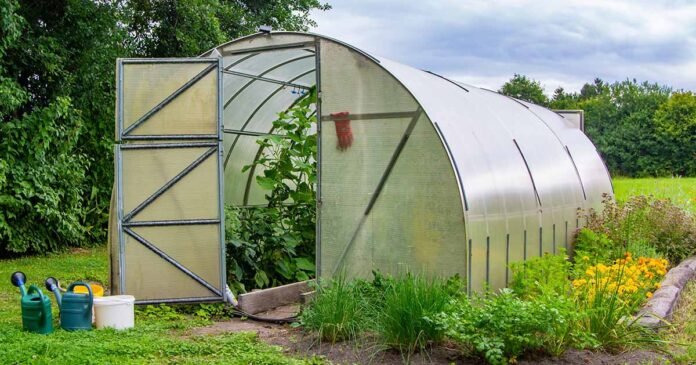A greenhouse offers exactly what many rodents are looking for: stable temperatures, shelter, and a dependable supply of food in the form of seeds, roots, and tender new growth.
When conditions outdoors become less predictable, particularly in fall and winter, it’s common for mice and rats to move in.
They can uproot seedlings overnight, dig through carefully prepared trays, and make short work of stored bulbs or bags of soil amendments.
They also reproduce quickly, which means a small problem can become a significant one in little time.

We link to vendors to help you find relevant products. If you buy from one of our links, we may earn a commission.
Most of the activity happens out of sight. Rodents are primarily nocturnal, so you rarely see them in the greenhouse during the day. Instead, you notice the evidence.
A tray of starts looks disturbed, a row of seedlings has vanished, or you find shredded leaves and paper tucked into a corner.
The sooner this evidence is recognized, the easier it is to intervene.
The goal is straightforward: reduce what attracts these pests, close off the ways they enter, and remove any that are already inside.
Signs of Rodent Activity
The animals most likely to take up residence inside a greenhouse are house mice and rats. Both will readily eat seeds, young stems, roots, and stored crops.


They’re agile, persistent, and opportunistic. Mice can pass through openings smaller than a quarter inch wide, and rats are strong enough to chew through wood, plastic, and thin metal if they have time.
Voles may also appear in greenhouses built directly on soil, particularly where there are existing tunnels in surrounding beds.
They enter at ground level and feed on root systems and bulbs rather than exposed plant tops.


Chipmunks, squirrels, and groundhogs can cause noticeable damage outdoors, but they are rarely long-term residents inside the structure.
They may come and go, nibbling and doing damage.
Signs of rodent presence include:
- Soil that looks scraped or pushed aside
- Seedlings disappearing in neat, tidy bites rather than collapse
- Small, dark droppings along shelves or corners
- Shredded material like paper, plastic, or dried leaves formed into a nest
- Piles of seeds or nuts collected in pots, trays, or tool bins
Mice are diligent hoarders. If you find a cache, the greenhouse is not simply a place they’ve visited, it’s where they’ve taken up residence.
Recognizing the activity is only the first step.


